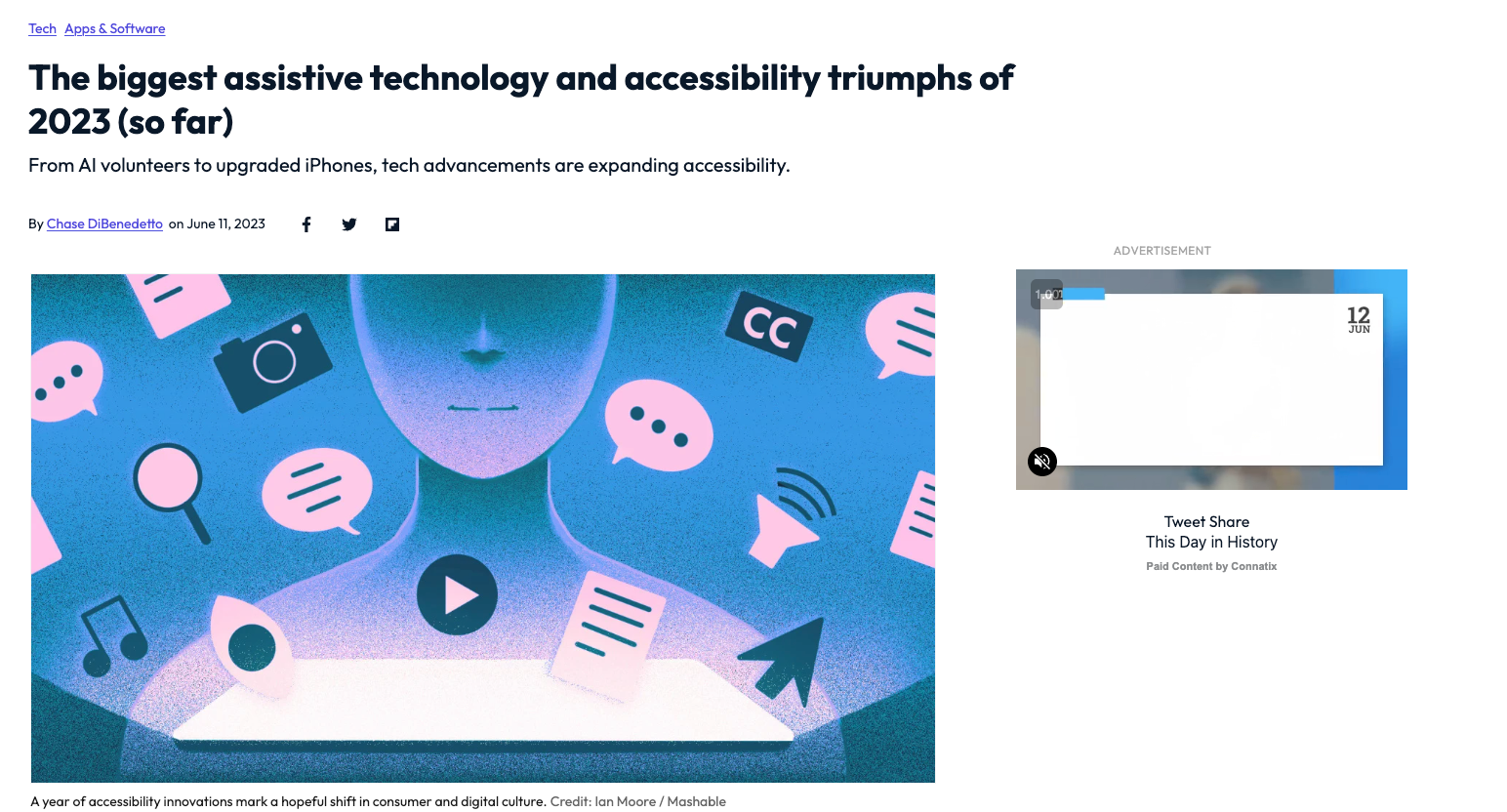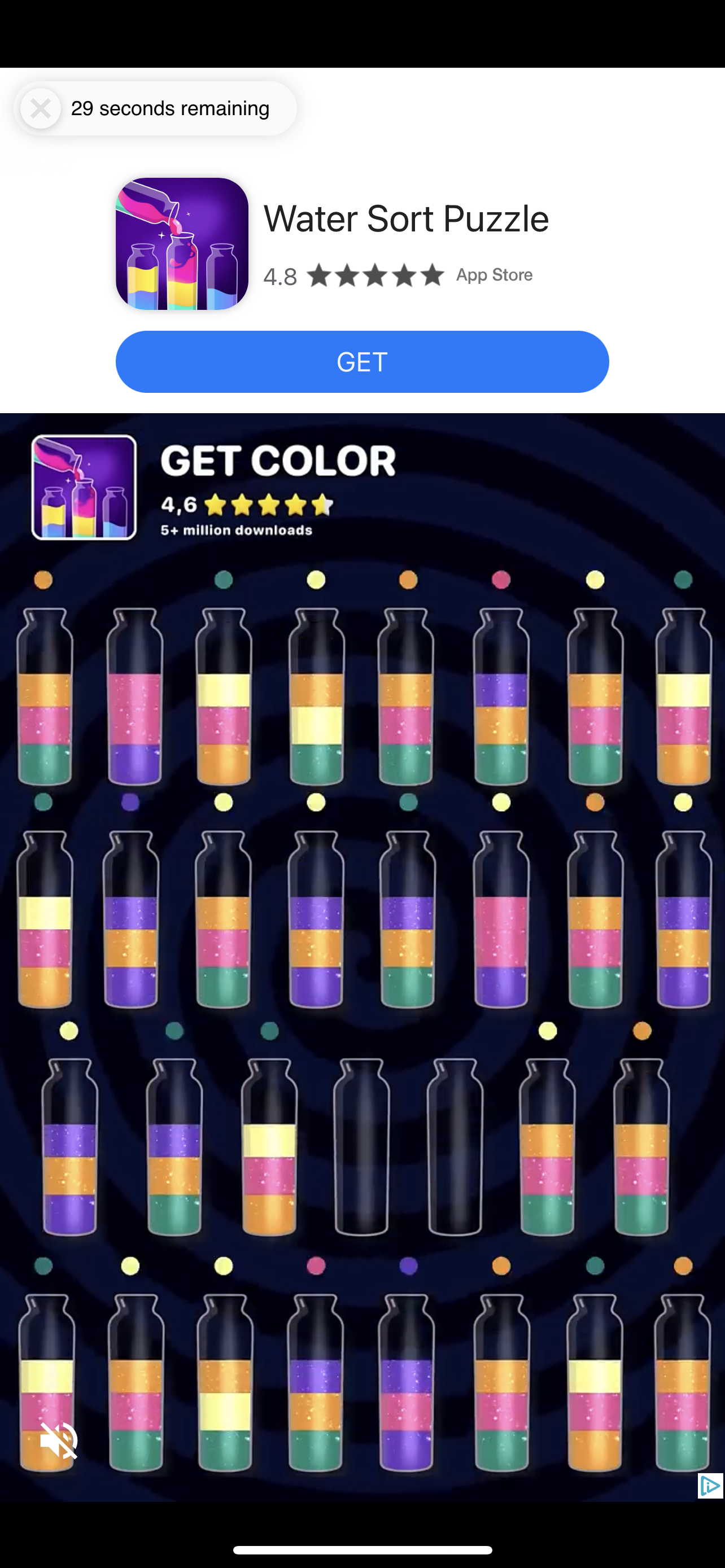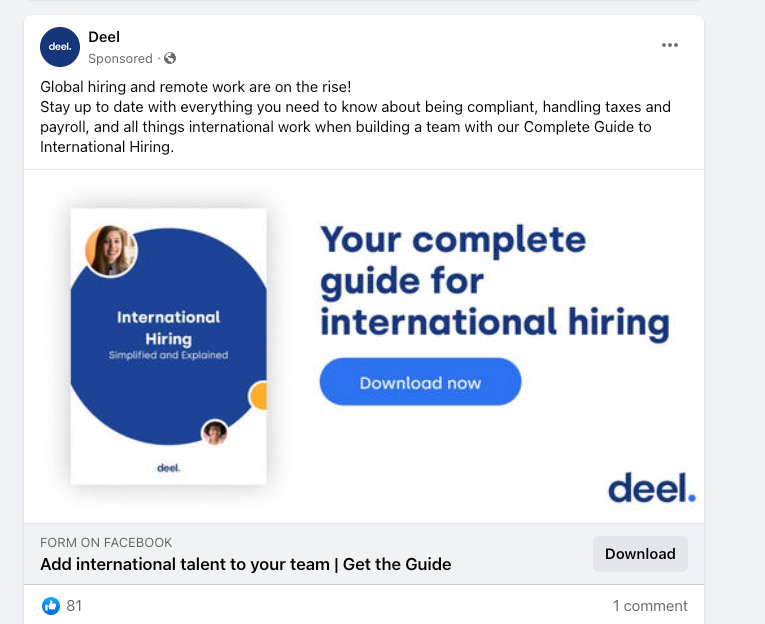The Ultimate Guide to AdTech
Take a deep dive and understand exactly what AdTech is and it's different use cases.

Craig Dennis
June 9, 2023
15 minutes
What is AdTech?
AdTech stands for advertising technology and refers to the entire ecosystem that connects advertisers with publishers. The purpose of AdTech is to streamline the process of delivering data-driven, personalized ads to specific target audiences across various channels.*
The main use case for AdTech platforms is to provide a better way to connect advertisers and publishers. AdTech provides a technology to enhance how advertisers buy ad space from publishers and allows publishers to sell their ad space to advertisers easily.
Advertisers
An advertiser is an individual or business that wants to promote a product, service, or message by running advertising campaigns. They invest in advertising to increase brand awareness, drive website traffic, generate leads, or boost sales. Advertisers create and design advertisements, determine the target audience, allocate budgets, and choose the advertising channels or platforms to display them. They work with ad agencies, AdTech platforms, and media partners to plan, execute, and optimize their advertising campaigns.
Publishers
A publisher is an individual or business with a platform, such as a website, app, or media outlet, where advertisements are displayed. They provide the ad inventory that’s available on their platforms.
Publishers monetize their platforms by selling ad space to advertisers or participating in ad revenue-sharing models. They collaborate with ad networks, ad exchanges, or supply-side platforms (SSPs) to fill their ad inventory with relevant ads. They aim to maximize their ad revenue while maintaining a positive user experience on their platforms.
What is the Difference Between MarTech and AdTech
MarTech stands for marketing technology and is a collection of software and tools to optimize and streamline marketing efforts. MarTech focuses on harnessing technology to automate, optimize, and measure marketing campaigns across channels. On the other hand, AdTech focuses on buying and selling ad inventory space and provides a platform for managing advertising campaigns.
To simplify these two terms, examine the difference between marketing and advertising. Marketing is your actions to attract customers using compelling messaging. Marketing aims to provide valuable content that demonstrates your value, strengthens brand loyalty, and boosts sales.
Advertising is a marketing tactic that delivers persuasive messages across various channels to raise awareness, capture attention, and generate interest, all to encourage users to take a desired action, whether that’s a purchase, signup, form submission, or a scheduled demo.
| Martech | AdTech | |
|---|---|---|
| Primary Goal | Building and nurturing customer relationships | Delivering targeted ads |
| Scope | Broad range of digital marketing activities | Advertising-specific technologies |
| Key Technologies | CRM systems, marketing automation, analytics | Ad networks, DSPs, SSPs, ad exchanges |
| Performance Tracking | Impressions, email open rate, website traffic, and social media traffic. | Conversions, clickthrough rates (CTR), customer acquisition cost (CAC), return on ad spend (ROAS), and impressions |
Two Important Components of AdTech
There are two important terms that play important parts in the AdTech ecosystem; programmatic advertising and omnichannel marketing.
What is Programmatic Advertising?
Programmatic advertising is the automatic buying of digital advertising space compared to the often manual traditional digital advertising efforts. Programmatic advertising uses software and algorithms to automate the serving and purchasing of ads to the right users.
What is Omnichannel Marketing?
Omnichannel marketing is a consumer-centric view of creating a seamless and consistent customer experience across multiple channels and touchpoints. It recognizes that customers interact with companies on different channels, such as websites, mobile apps, social media, and physical stores. Omnichannel marketing helps integrate these channels to deliver a unified customer experience.
What are the Different Types of AdTech?
Within the AdTech landscape, there are a diverse array of technologies, each serving a distinct purpose. Familiarizing yourself with these different AdTech components is crucial to effectively navigate the complex advertising ecosystem.
Ad Servers
An ad server manages and delivers advertisements to websites or digital media channels. There are two types of ad servers: first-party and third-party. The main difference is that the publisher runs a first-party ad server, whereas external parties own third-party ad servers interacting with multiple publishers. Ad servers help to display the right ads to the appropriate users based on targeting criteria while providing insights and reporting on ad performance. Kevel is an example of an ad server.
Ad Networks
An ad network is a platform that collects ads from various publishers and sells them to advertisers. You can think of these platforms as an ad brokerage that buys impressions from a supplier and then sells those to advertisers with a markup.
Ad networks aggregate the ad space available to advertisers in an auction. Advertisers then set up their campaign directly in the ad network controlling factors such as target audience, budget, and frequency caps, and manage their campaigns without contacting the publisher.
Publishers benefit from an ad exchange as they have more control over the formats and styles of ads that appear on their sites. They can set minimum CPM for their digital advertising inventory and minimize spammy or inappropriate content.
Some popular ad networks are AdMob by Google, Yahoo Gemini, and One by AOL.
Ad Exchanges
An ad exchange platform allows publishers to list their ad inventory and advertisers to bid on impressions in a real-time auction. An ad exchange is like Facebook Marketplace, where someone lists what they are selling can list for others to buy.
An ad exchange works similarly to an ad network, but publishers list their ad inventory. A publisher connects to an ad exchange through a Supply-side Platform (SSP) so the ad exchange can select suitable advertisers. Then advertisers connect to the ad exchange through a Demand-side Platform (DSP) where they can set their budget to bid on available ad impressions.
Publishers benefit from an ad exchange as they have more control over the formats and styles of ads that appear on their sites. They can set minimum CPM for their ad inventory and reduce spammy or unsuitable content. Likewise, advertisers benefit from an ad exchange as they have better control over their advertising costs and how often an ad is shown to the same user and block certain publishers from displaying their ads.
Some popular ad exchanges are Googe Ad Exchange, OpenX, and Magnite.
Activation Platforms
Activation platforms connect to your existing marketing datasets so you can build granular audience cohorts and send them automatically to your ad platforms for targeting. These platforms provide a rich suite of features to manage audiences, orchestrate journeys, perform A/B testing, and automate data flows into your ad tools. This removes the need to make ad-hoc requests to the data team or import manual CSVs so you can focus on targeting and campaign optimization.
Hightouch is the leading activation platform.
Demand-side Platforms
A demand-side platform (DSP) allows advertisers to buy ad inventory from multiple ad exchanges, ad networks, and publishers.
DSPs work by using programmatic advertising to perform real-time bidding on ad placements. The advertiser creates an ad campaign with the creatives and the target audience. These platforms look at the available ad inventory and find suitable ad space. Then it moves onto a real-time bidding auction, where the ad budget will determine the winning ads.
DSPs are a single place for advertisers to manage, track, and optimize ad campaigns. They give you access to various platforms and more control over where to display your ads. Some DSPs partner with third-party data providers to give you better tracking and reporting capabilities.
Some popular demand-side platforms are Basis Technologies, Knorex, and Jampp.
Supply-side Platforms
Supply-side Platforms (SSPs) allow publishers to connect the ad inventory on their site to advertisers that want to purchase/display ads.
SSPs collect user data from the publisher’s website and then offer the impression to an ad exchange where advertisers bid on ad space. The advertiser with the highest bidding wins the ad space, and their ads are rendered on the publisher's site.
SSPs help publishers automatically sell ad inventory to advertisers without manual work and provide detailed reporting on how much ad inventory is being bought. SSPs also help increase advertisers participating in bidding due to connecting to multiple networks, ad exchanges, and DSPs.
Some popular companies that provide supply-side platforms are Google Doubleclick Ad Exchange, PubMatic, and 33Across.
Data Management Platforms
A data management platform (DMP) collects first, second, and third-party data to build detailed customer profiles. The user data is then sold to publishers and marketers to help enrich audience data for targeting.
A publisher or marketer sends the attributes of what audience they are looking for (e.g., male, age 25-35, living in San Francisco), and the DMP looks for users that match those attributes. Those users are then sent to advertising platforms to be targeted with ads.
DMPs are important as they help reduce ad spend by using data to narrow targeting so customers only see relevant messaging.
Some popular data management platforms are OnAudience and Talend.
Search Engine Marketing Platforms
A search engine marketing (SEM) platform helps to manage and create paid advertising that appears in search engine results. Advertisers can choose keywords they wish to target and have their ads appear when users search for them.
SEM platforms let advertisers bid on keywords they wish to appear as an ad. They then go through an ad auction where attributes like budget and quality score decide your ad’s position on the search engine results page (SERP).
SEMs are a great way to find new customers due to the high intent and search volumes behind some keywords.
One of the most popular SEM is GoogleAds.
AdTech Examples
Advertisers utilize AdTech to support campaigns across multiple platforms, typically focusing on four main channels.
Traditional AdTech
The media landscape has expanded to include more than just visual formats. TV and radio station ads have been long-used platforms for advertising, but podcast AdTech is on the incline due to the increasing number of people listening to podcasts.
TV advertising offers various methods, from product placement, sponsorship, and video ads between TV shows. The problem with TV ads is that they can't focus on specific groups of people as well as other channels. They mostly rely on high-level demographics about who might be watching, so it's harder to reach exactly the right audience. Radio station ads are similar to traditional TV advertising. You have high-level demographics, so it’s more about getting high impressions than specific targeting.
Web and Mobile AdTech
Online AdTech refers to placing advertisements on websites. Web ads catch consumers’ attention when interacting on websites. For example, Hubspot could find an email marketing-related article on Martech.org and buy out ad space to encourage users to learn more about its email marketing features.

A webpage advertisement
Mobile AdTech encompasses mobile-friendly websites and apps. You could buy ad space on websites and apps you know your target audience visits and uses. For example, some mobile games present ads periodically when playing.
Examples of web AdTech are Google Ads, Criteo, and Taboola. Examples of mobile AdTech as Google AdMob and InMobi.

An in-app ad from a mobile game
Email AdTech
Email is one of the longest-lasting digital channels for reaching current and prospective customers. Email marketing platforms let you track important metrics like clickthrough and open rates to give you insights into your email campaigns.
Email Adtech helps to send out marketing emails. You likely receive marketing emails daily from companies trying to get your attention. It could be company updates or promotions.

A sales email
Examples of email AdTech are Mailchimp, ConvertKit, and Constant Contact.
Social Media AdTech
Social media ads are another great way to get in front of people due to the sheer volume of users. Social media AdTech can provide extremely detailed user demographics for precise targeting.
Social media AdTech helps to display ads within social media platforms. You see these ads as you scroll through your timeline or For You page.

An advert appearing in a social media feed
Examples of social media AdTech are Facebook Ads Manager, LinkedIn Ads, and TikTok Ads Manager.
AdTech Use Cases
AdTech offers a range of powerful capabilities that can assist advertisers in creating suppression lists, lookalike audiences, and performing retargeting campaigns.
Suppression Lists
Optimizing ad spend is a huge challenge, and many companies still show ads to people who shouldn’t be seeing them, which results in wasted ad spend.
You should use a suppression list to ensure you efficiently spend your ad spend. A suppression list is a list of people you don’t want to show your ads to avoid wasting your ad spend. People on the list could be customers that have already purchased or current customers you don’t want to see specific messaging.
Suppression lists are usually uploaded manually. If done weekly, you’re compounding costs over seven days by targeting people you shouldn’t.
An activation platform like Hightouch can ensure your suppression list is updated daily to avoid wasting your ad spend like in the chart below.

The compound effort of NOT using suppression lists
Lookalike Audiences
Acquiring customers can be difficult, especially quality customers. You can broadly run ads to potential customers, but it can be costly.
A better way of approaching this problem is using lookalike audiences. Lookalike audiences are a method of showing your ads to users who are more likely to be interested. It works by uploading a list of existing customers into an ad platform which will then find similar customers.
Using an activation platform can help you create audiences yourself. You might want to create a more sophisticated audience, such as high-value users with a lifetime value of over 100 who has purchased in the last six months. This lookalike audience would have similar attributes, making them more desirable customers.

The Hightouch audience builder
Retargeting
Simply having a list of leads doesn’t turn them into customers. You need a strategy to help nurture the relationship and work towards converting them. You can achieve this by retargeting.
Retargeting puts your ads in front of existing leads to convert or expose them further to your brand. For retargeting, you create a list of existing leads to upload into your ad platform.
An activation platform can help you create and send these audiences to ad platforms. It can ensure the retargeting lists are up to date so that if someone becomes a customer, they can be removed so you aren’t wasting ad spend.
What are the Benefits of AdTech?
AdTech helps to simplify and manage ad campaigns by automating manual tasks. With the rise of Artificial Intelligence and machine learning and the vast amount of data collected, these platforms will continue to improve at delivering positive results. Here are some of the key benefits of AdTech.
Improved Targeting
AdTech provides data-driven insights and can segment users to create precise targeting. You can use attributes such as demographics, interests, behaviors, and geographic location to deliver your ads to the right people to increase engagement.
Increased Efficiency
AdTech provides a layer of automation to the advertising process, reducing the need for manual interaction. Tasks such as ad campaign management, targeting, optimization, and reporting can be automated, allowing more time to focus on higher-order tasks such as strategy and ad creatives.
Improved Customer Experience
AdTech helps improve the customer experience by delivering relevant and personalized ads. It achieves this by segmenting users based on different attributes so your ads align with customers’ interests and preferences, making for an engaging and non-intrusive ad experience.
Better ROI
With AdTech helping to improve ad targeting, you can display ads to a segment of users most likely to resonate with your messaging. Ads delivered to the right audience will help your conversion rates and improve your ad spend by not showing them to the wrong customers.
Conclusion
With more money being spent on digital advertising, it simply isn’t possible to manually monitor ad campaigns. AdTech helps to automate certain tasks so you can focus on higher-level work and drive more value.
With the AdTech ecosystem becoming more complex and offering more tools, it can make managing all your customer data hard. Ensuring your data is fresh, up-to-date, and consistent across all your ad platforms can be time-consuming.
Hightouch automates this entire process allowing you to granularly build audiences and sync them automatically to your favorite AdTech tools. Book a demo today to learn how to get fresh and accurate customer data into your AdTech tools in under 23 minutes.



